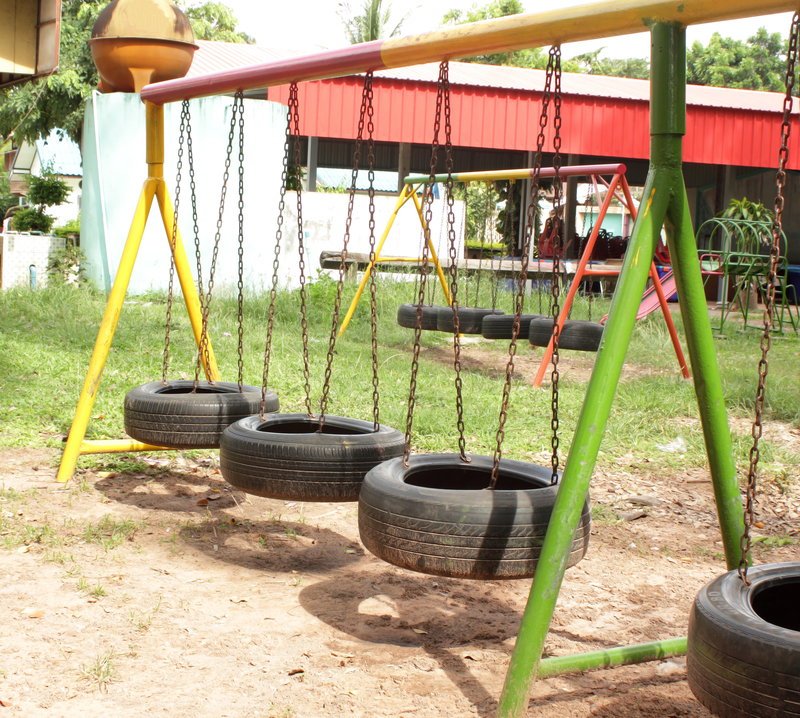Why Responsible PPE Waste Disposal Matters More Than Ever
In the aftermath of the COVID-19 pandemic and the ever-increasing use of personal protective equipment (PPE), the need for responsible PPE waste disposal has never been more pressing. From hospitals to homes, billions of masks, gloves, face shields, and gowns have become part of our daily lives. But what happens to these items once they're discarded? How does improper disposal affect our communities and the environment? Let's explore why the safe disposal of PPE waste is a critical issue for our generation and the planet.
The Surging Use of PPE and Its Impact
The global demand for PPE skyrocketed during recent health crises, particularly the COVID-19 pandemic. Healthcare professionals, essential workers, and the general public all turned to various forms of PPE for protection. While these items are invaluable for infection control, their widespread use has resulted in a PPE waste management challenge of unprecedented scale.
- Global consumption: According to the World Health Organization (WHO), an estimated 89 million masks, 76 million gloves, and 1.6 million goggles were needed monthly at the height of the pandemic.
- Everyday use: Single-use masks and gloves flooded homes and public spaces, significantly increasing household waste volumes.
Why Improper PPE Waste Disposal is a Growing Problem
Improper PPE waste disposal -- such as tossing masks into regular trash bins or littering gloves in public areas -- has created critical challenges that extend beyond simple aesthetics. These problems include:
- Environmental pollution from non-biodegradable plastics
- Threats to wildlife and marine animals
- Potential health risks for sanitation workers and the community
- Legal repercussions for failing to comply with regulated disposal protocols

Environmental Impact of PPE Waste
PPE items like masks and gloves are primarily made from synthetic polymers, including polypropylene and polyethylene. These plastics can persist in the environment for hundreds of years, fragmenting into microplastics and infiltrating food chains. Consider the following alarming facts:
- Land pollution: Millions of used masks end up in landfills, taking up valuable space and leaching chemicals into the soil.
- Waterways and oceans: An estimated 1.5 billion masks entered the ocean in 2020 alone, threatening marine ecosystems and aquatic life.
- Wildlife hazards: Animals may ingest discarded PPE or become entangled, often resulting in injury or death.
Improper PPE waste disposal is now a significant contributor to the global plastic pollution crisis.
Health and Safety Considerations
The risk from PPE waste is not merely environmental. Used masks, gloves, and gowns may be contaminated with pathogens - viruses, bacteria, or even hazardous chemicals. If not handled properly, discarded PPE poses serious health risks such as:
- Contaminating waste management workers
- Facilitating the spread of infectious diseases
- Becoming unintended vectors for viruses in public areas
Proper PPE waste disposal in specialized bins and following medical waste protocols is vital to curb secondary transmission and protect those handling our refuse.
Legal, Ethical, and Social Responsibilities
As the volume of PPE waste continues to soar, so do regulations surrounding its correct disposal. Institutions, businesses, and individuals have strong legal and moral imperatives to follow PPE waste management best practices.
Regulatory Requirements
- Healthcare sectors: Must adhere to strict hazardous waste disposal regulations for PPE, underpinned by Occupational Safety and Health Administration (OSHA) or equivalent national health agency guidelines.
- Workplaces: Responsible for ensuring staff are trained on how to dispose of PPE safely and are provided with the necessary disposal infrastructure.
- Households: Increasingly encouraged or required to separate and safely bag used PPE for curbside pickup or authorized drop-off points.
Ignoring these regulations can lead to hefty fines and reputational damage, especially for organizations within the healthcare and service industries.
Social and Corporate Responsibility
Organizations are now expected to go beyond mere compliance. From eco-friendly waste reduction initiatives to awareness campaigns, corporate citizenship entails:
- Educating employees and the public about proper PPE waste disposal methods
- Partnering with certified hazardous waste management companies for collection and disposal
- Implementing zero-waste or recycling goals for non-contaminated PPE when possible
Responsible PPE Waste Disposal Methods
What are the most effective ways to manage PPE waste responsibly? Here are the PPE disposal best practices adopted worldwide:
1. Segregation at Source
- Designated PPE waste bins: Clearly labeled, color-coded containers reduce the chances of accidental contamination and facilitate downstream handling.
- Separation from everyday waste: Never mix used PPE with general household or office garbage.
2. Safe Containment
- Double bagging: Especially important for items suspected to be contaminated or from medical settings.
- Sealing before disposal: Ensures pathogens cannot escape or contaminate surroundings.
3. Specialized Collection and Treatment
- Incineration: High-temperature incineration remains the gold standard for destroying hazardous pathogens and reducing waste volume.
- Autoclaving: Steam sterilization is used for medical waste, rendering items microbiologically safe before landfill disposal.
4. Recycling Initiatives
- Research into recyclable PPE: Some manufacturers are exploring biodegradable PPE and programs to recycle non-contaminated items.
- Closed-loop recycling: Innovative projects convert certain PPE waste into construction materials or biofuels, minimizing landfill burden.
Note: Only non-contaminated PPE should be considered for recycling. Medical or potentially infectious items must always follow hazardous waste protocols.
Consequences of Neglecting PPE Waste Responsibility
The cost of ignoring proper PPE waste disposal protocols is steep. The aftermath can include:
- Increased infection risk: For both frontline workers and the general public
- Environmental degradation: Persistent plastics, toxins, and wildlife deaths
- Fines and penalties: For non-compliance with waste regulations
- Loss of public trust: Erosion of reputation for businesses and institutions
Responsible PPE waste disposal protects health, preserves the environment, and ensures compliance with evolving regulations.
Raising Awareness: Individual and Community Actions
Every individual and organization has a part to play in responsible PPE waste management. Take these practical steps to contribute to a safer and cleaner world:
- Educate yourself and others: Learn the latest guidelines from local health and environmental agencies.
- Participate in community cleanups: Join efforts to collect littered PPE from public spaces.
- Encourage recycling: Support initiatives that develop safe recycling streams for PPE.
- Hold organizations accountable: Advocate for stricter enforcement of PPE disposal standards in your workplace or community.
The Role of Innovation in PPE Waste Solutions
Scientists and environmental engineers are pioneering new ways to combat the PPE waste crisis. Some advancements include:
- Biodegradable PPE development: Research is underway to produce effective masks and gloves made from plant-based materials that break down safely in the environment.
- Automated waste sorting: Smart bins and sensors help separate PPE waste efficiently, reducing contamination risks.
- Energy recovery: Converting PPE plastics through pyrolysis or other chemical methods to create fuel, minimizing landfill use.
By supporting and adopting these innovations, both individuals and industries can make significant strides in responsible PPE waste disposal.

Global Examples: PPE Waste Disposal Success Stories
Several countries and cities have made significant progress through proactive approaches:
- Singapore: Introduced color-coded public disposal stations and strict enforcement in hospitals, reducing PPE litter and contamination rates.
- United Kingdom: Launched national campaigns promoting household PPE waste separation, complemented by increased recycling research funding.
- Canada: Supported start-ups collecting used masks for conversion to road-building material, reducing environmental impact and boosting local economies.
These models demonstrate that with the right policies and community engagement, responsible PPE waste disposal is both achievable and sustainable.
Conclusion: Our Shared Responsibility
The surge in PPE use has made proper disposal an urgent global priority. As we face ongoing health challenges and environmental pressures, every mask, glove, and face shield disposed of responsibly helps protect our world.
- Environmental stewardship: Reduce plastic pollution and protect wildlife by separating and containing PPE waste.
- Public health: Prevent the spread of disease through careful handling and disposal practices.
- Legal compliance: Stay updated with evolving local and national requirements for PPE waste management.
Responsible PPE waste disposal matters more than ever--and it is within all our power to make a meaningful difference. For a safer, cleaner, and more sustainable world, let's commit to responsible PPE waste management today.
